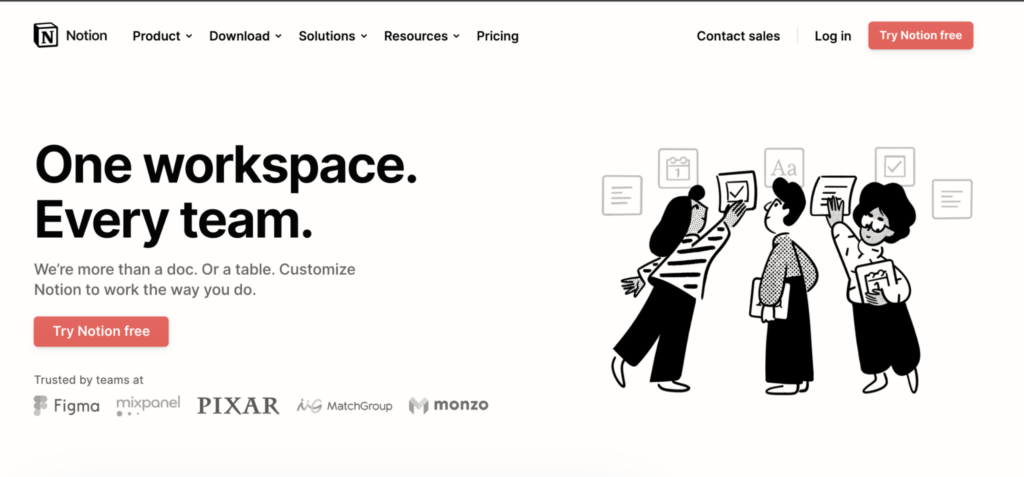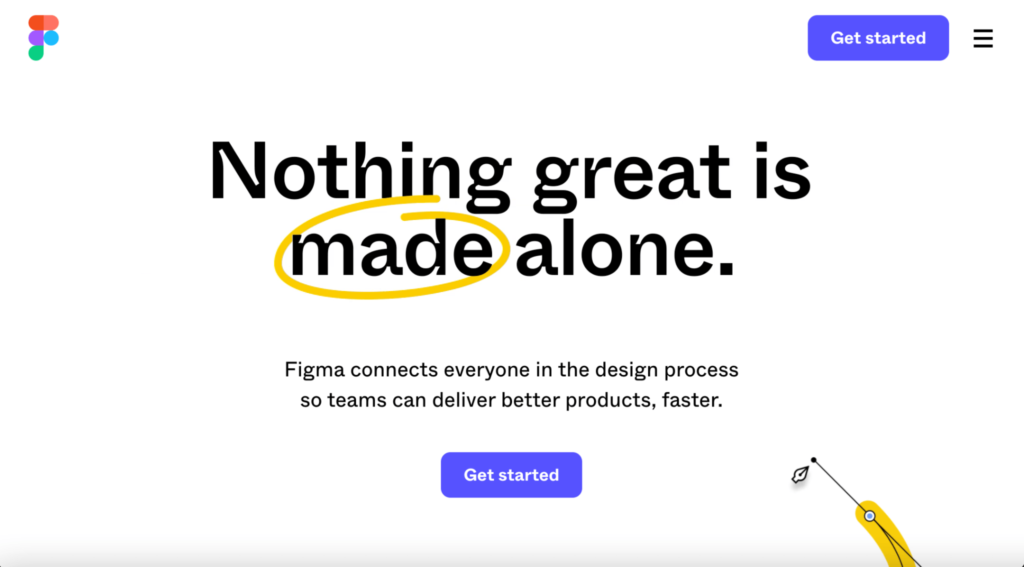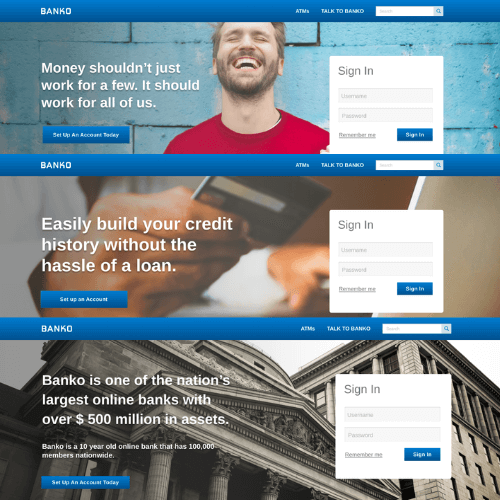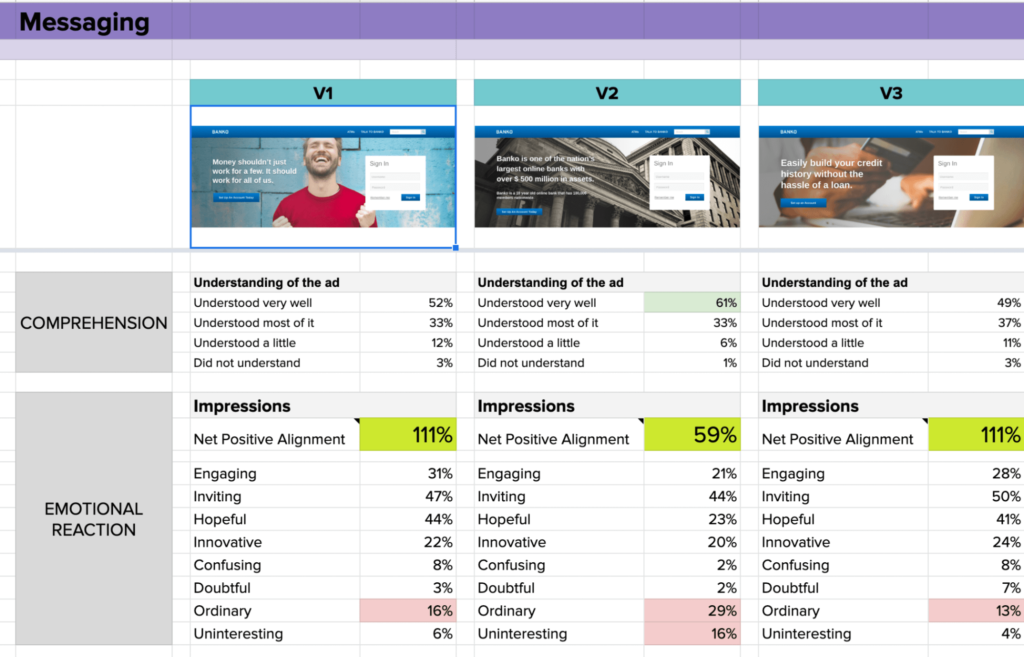A value proposition can make or break your business. If you don’t clearly communicate your value to the right audience, you’ll be leaving potential money on the table. And you’ll be underselling yourselves to boot.
But you don’t need to wait until you launch a landing page to see if your newest ideas will convert.
You can test your value props with your targeted audience and learn what key changes to make before releasing them out into the universe.
Let’s walk you through testing a value proposition.
What Makes A Great Value Proposition
Before we get into the nitty-gritty of testing, let’s examine what makes a value proposition… well, valuable.
You want to ensure that your proposition is hyper-focused and addresses the needs of a highly-targeted, niche audience. It should fix a pain point for them.
There are three key components of a great value prop:
- Relevant. You want to demonstrate in a few words how your product or service solves problems for your audience.
- Quantified Value. It must communicate the specifics of how it solves those problems.
- Differentiation. What makes your product and service unique and different from your competitors — i.e the “why” anyone should pony up money for it.
In addition to that, there are a few questions you should ask yourself:
- What product or service do you offer?
- Who is your audience?
- What problems do you solve for your audience?
- What are the benefits of your product to your audience?
- Why would someone purchase your product/service over a competitor’s?
Some of this might be easier if your company has a positioning statement. This is the carefully crafted narrative of your brand. And a lot of that work can be leveraged for your value proposition.
That’s because you’ve already done a lot of pre-work, along with hopefully research, to understand what makes your product or service stand out.
Things such as:
- Crafting your brand’s reputation
- Defined yourself against your competitors
- Outlined your product attributes and benefits
- Established pricing and usage of your product
A Few Good Value Proposition Examples
Let’s look at a few good examples of value props out in the wild.
AirPods Max

Apple’s proposition for the AirPods Max communicates what it does and what pain its audience has — in this case, getting great hi-fi audio. Further, you can see that Apple is being highly-targeted with its audience — solo listeners.
Notion

Notion clearly communicates how it simplifies the lives of entire teams and how they can move from a simple document repository to managing entire projects.
Figma

Design tool Figma demonstrates in just a few words on how it can accelerate a design team’s process and output.
Step-by-Step Guide to Value Proposition Testing
Now that we defined what goes into a value proposition, let’s go through how to test it.
You can test your value props wherever they are in the creative process:
- Text Only. You can put your wording in front of your target audience to figure out if your syntax and diction sings for them.
- Copy with Visuals. You can combine that wording with whatever preliminary visuals you might have to see if they work together or just cause confusion.
- Competitor Ideas. Studying your competitors can help in crafting a value proposition that sets you apart.
There are a few key ways to test each kind of value prop:
- Sentiment. How your audience feels about your proposition. Does it elicit a positive or negative response?
- Comprehension/Impression. Does your audience understand what you’re putting down? Or is it left cold by your proposition? Does your value prop make the user want more?
- Competitor Comparison. Test against your competitors to see if your value prop has enough differentiation.
Let’s See This In Action
Recently, we tested the value proposition of a banking application to gauge its appeal with its targeted audience.

Our Hunches and Our Audience
We came up with three variations to test with a highly-targeted audience, people with a bank account between the ages of 35-40 within the United States.
From that we developed a few hunches:
- Audiences would prefer a value proposition that reflected their banking needs
- The messaging focused on the bank’s reputation would appeal to those that were looking for an established service
- The credit messaging would appeal to those who need to build credit without signing up for a loan or credit card
Our Testing
We sent each of our value prop variations to separate groups of 100 participants. Our survey was designed to gauge how well participants understand each variation and then what their emotional reaction is to the messaging.
We used a combination of a likert scale question to measure comprehension and a multiple choice question to understand the impressions that each value prop conveys.
Our multiple choice question was used as a Brand Polarity gauge, where participants are given up to 8 impressions to describe their reaction to the visual. The sum of the positive impressions minus the some of the negative then gives us a single data point (Net Positive Alignment) to compare the emotional reactions to these variations.
Our Signals
The signals we received from our hunches highlighted the best of the three variations. We found that variation 1 and variation 3 received the most positive reactions, especially in terms of feeling Hopeful and Engaging to our audience.
Variation 2 mixed in data with its value proposition, which produced greater clarity for participants at the expense of their emotional connection. We typically look for spikes of 10% or more in each negative impression, so seeing V2 produce up to 30% in some negative impressions is a clear signal to move away from that direction.

Other signals we gathered:
- Audiences felt that V1 gave the promise of an inclusive banking experience. 31% were engaged with this type of messaging.
- V3 also gained the same net positive reaction as the first, especially among those looking to build their credit.
- However, V2 was deemed the most comprehensive message. 61% of the audience felt this messaging was direct and clear.
This gave us the sense that we might want to find an approach that has the comprehension of the “$500 Million” in V2 but connects more to the audience like the first and last variations.
Start Testing Your Value Proposition
With Helio, you can see if your messaging aligns with your targeted audience. It’s easy to get started.
If you don’t have an audience list of your own, hop over to our Ready-Made Audiences. We’ve curated audiences in a variety of industries.
Here are a few industries you can choose from:
- Families with Cyber-Security Concerns. This is composed of families that earn less than $40K per year and are looking for ways to better secure their financial and personal information.
- Mobile Banking Audience. Participants in the US who are mobile bank account users. These testers typically have their banking app downloaded on their mobile phone.
- Investors. Participants who make at least $5,000 in investments each year. This group of testers may also include professionals who have the responsibility to make investments for their clients, such as Financial Advisors.
There are many more to choose from, including consumers of all stripes and backgrounds. You can even create custom segments to further drill down into unique audiences that you need to reach.
Give Helio a spin with this easy-to-use template that lets you test early concepts and sketches.














